The month of Ramadan is a holy period for Muslims all over the world. Observed in the ninth month of the Muslim Calendar, it is a period of self-detachment, introspection and focus on God. It was during Ramadan in which the Quran was revealed to Prophet Mohammad on the night of Laylat Al Qadr or the “Night of Power.” At the crack of dawn, a meal called Suhoor is eaten. Not a morsel of food nor a sip of water is consumed thereafter from sunrise to sunset when Iftar is eaten to break open the fast.
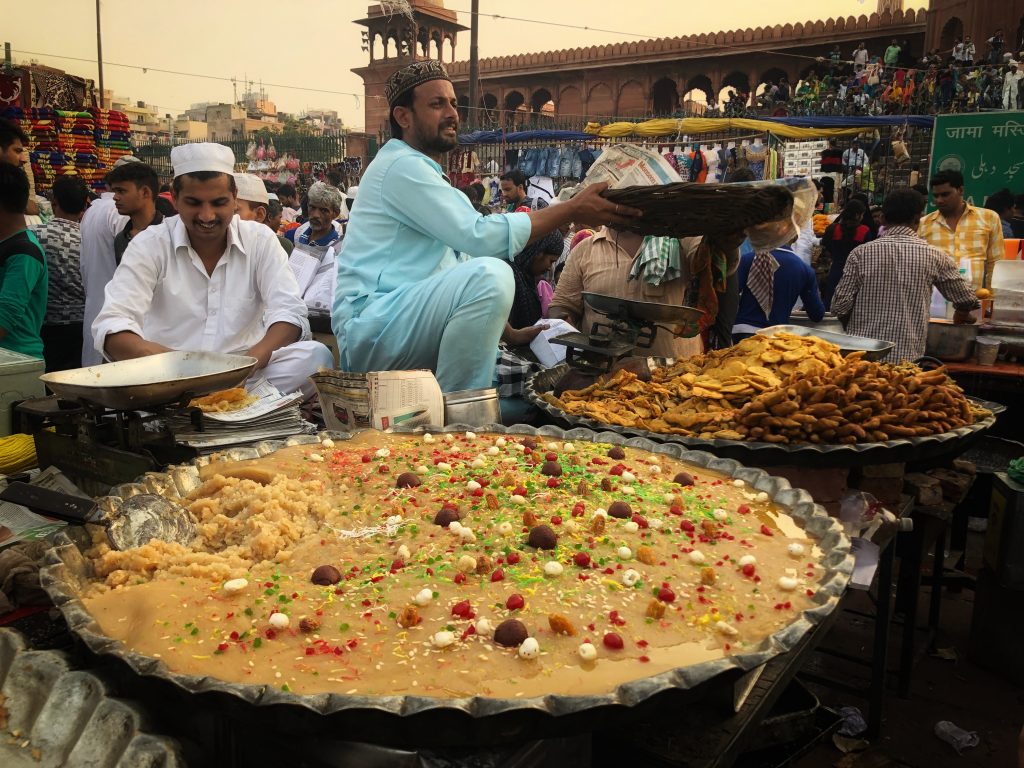
Masjid – i – Jahan – Numa or Jama Masjid is one of the largest mosques in India. During Ramadan, thousands of people gather in its courtyard for Iftar. An opportunity not to be missed, I paid up for an Iftar experience with Delhi By Foot, a group that conducts amazing tours and walks in Delhi. The Delhi Metro is the perfect way to commute to Old Delhi. No! Not a car, please. A traffic jam can get one stuck for hours. The Violet Line of the Metro drops one right in the buzz of it all, in Jama Masjid and I took just that. A 10-minute walk to Gate No.1 and I joined our group to walk up the stairs of the mosque. With footwear tucked under our arms and heads covered, we entered the Courtyard. More than 10000 people thronged the vast space in small groups. A ring of excitement and festive cheer resonated in the air.
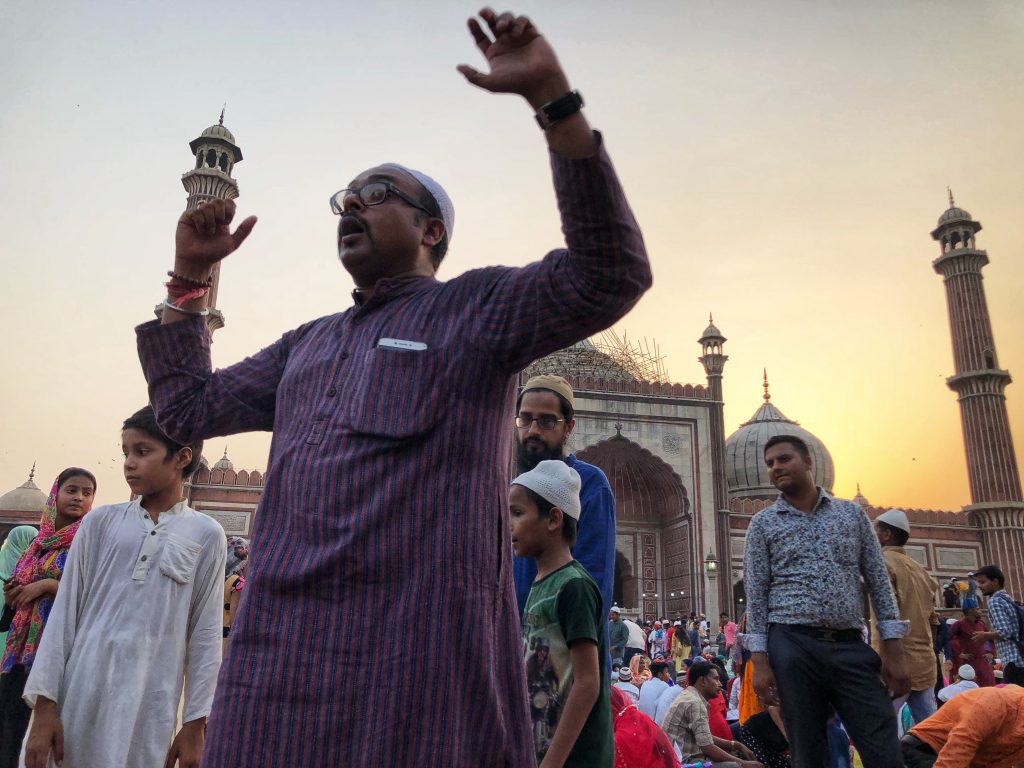
Ramit, organiser of Delhi by Foot, sharing the history of Ramadan with us.
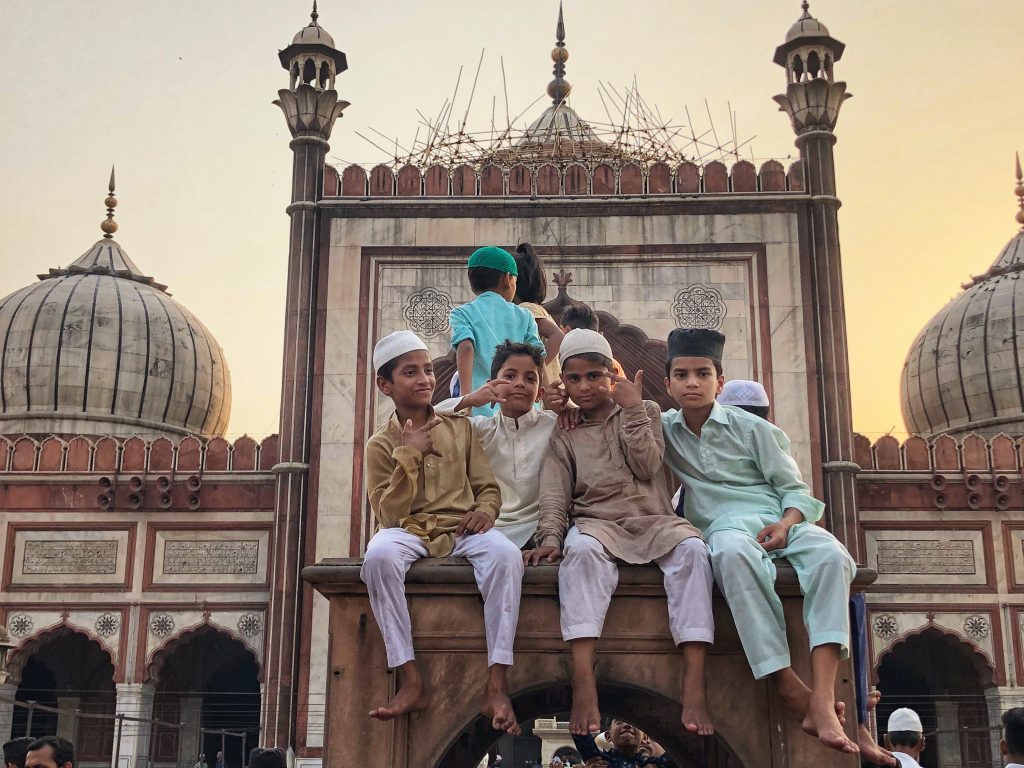
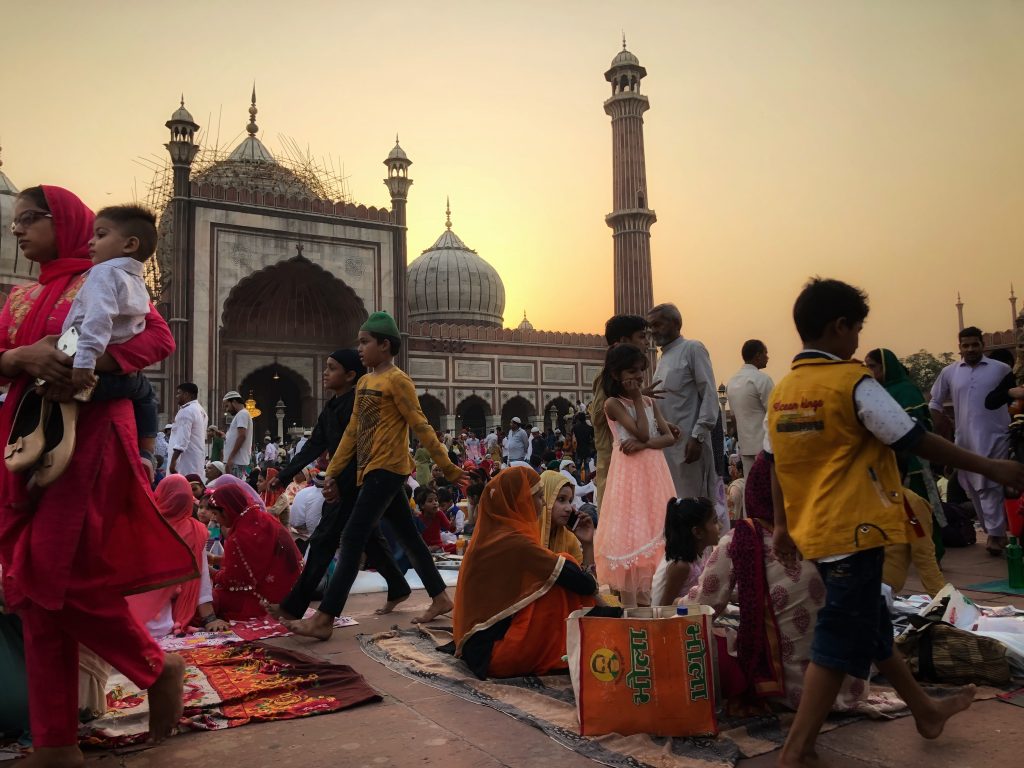
Waiting for the Iftar time.
Iftar is a time of togetherness and bonding. The courtyard was choc a block full. Holding bags containing food and cold drinks, people scanned the courtyard to find some space to lay out a mat or bedsheet to sit down. It was 6:30 p.m and there were still 46 minutes to go for sunset. While children played and men settled down, women started laying out food from their carry bags. Some chopped fruits in big utensils and newspapers. The preparation for Iftar had begun. The whole courtyard looked like a picnic ground. Not everything for Iftar is cooked and brought from home. Many vendors on the streets sell delicacies that are prepared especially during Ramadan. Delhi by foot had arranged a mini feast for us too. Kachoris, paneer pakodas, dahi bhallas, dates and khus sherbet were spread before us. Though dates are usually eaten to break a fast, one can have juices, sherbets, yoghurt, fruits or fried snacks. What fascinated me was the patience with which everyone sat around food, waiting patiently for the time of the announcement. Can you imagine being hungry and thirsty since sunrise yet not giving in to the temptation of food?
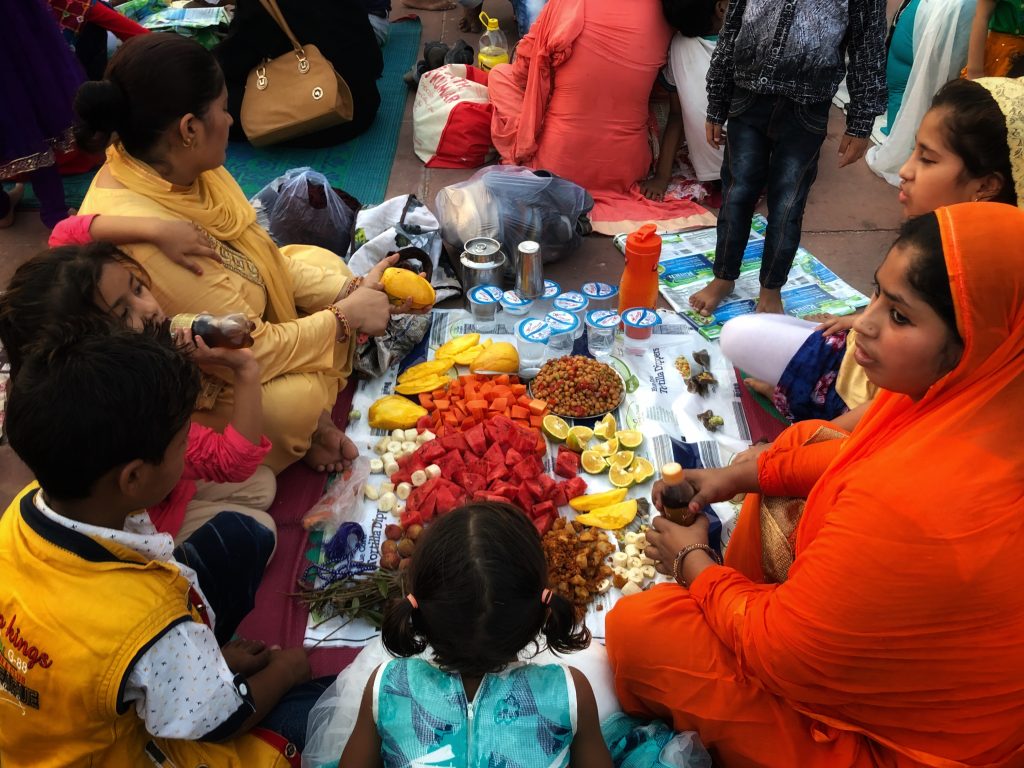
The cutting of fruits as the sunset time approaches.
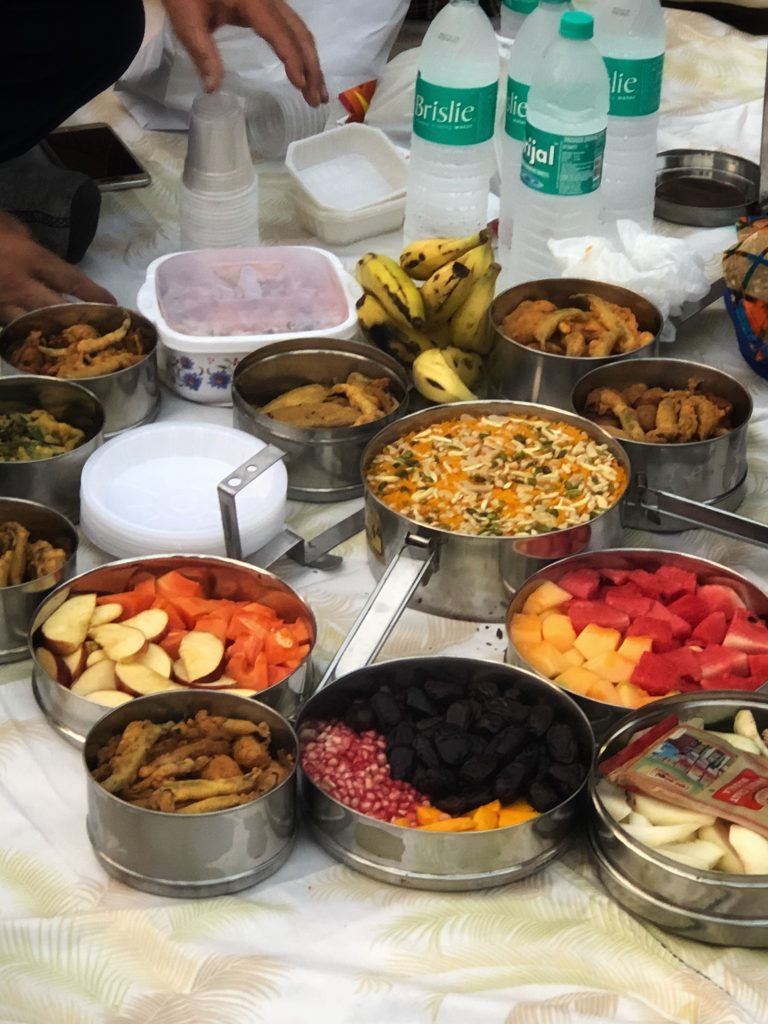
The food gets laid out.
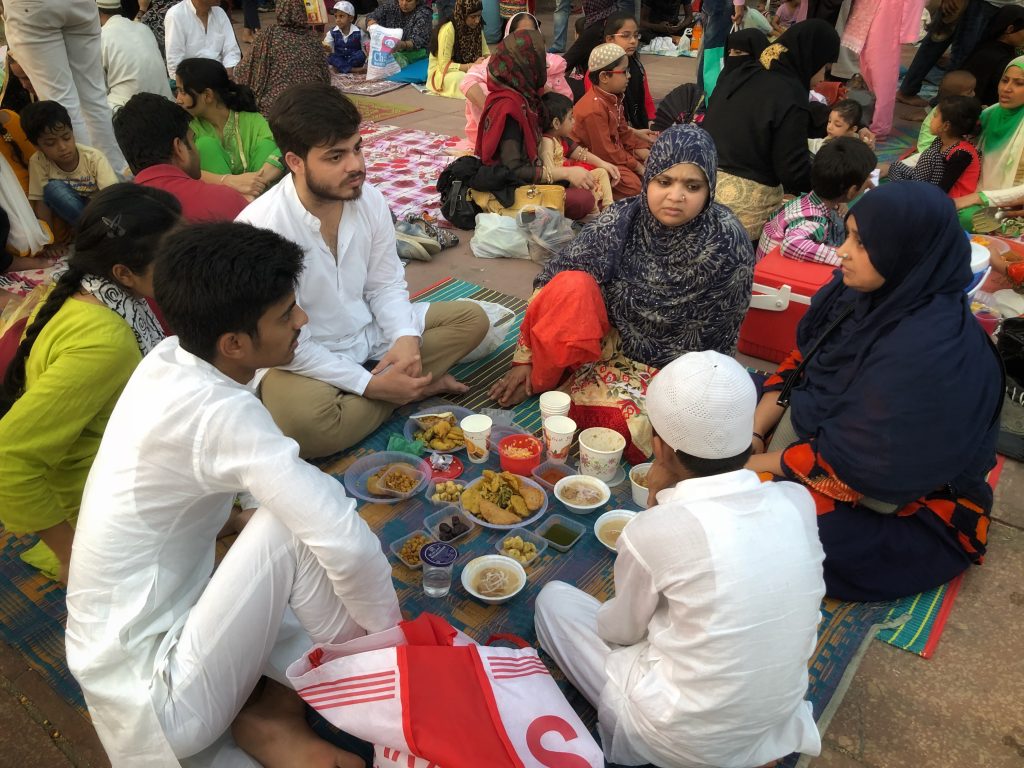
Iftar is about togetherness and love.
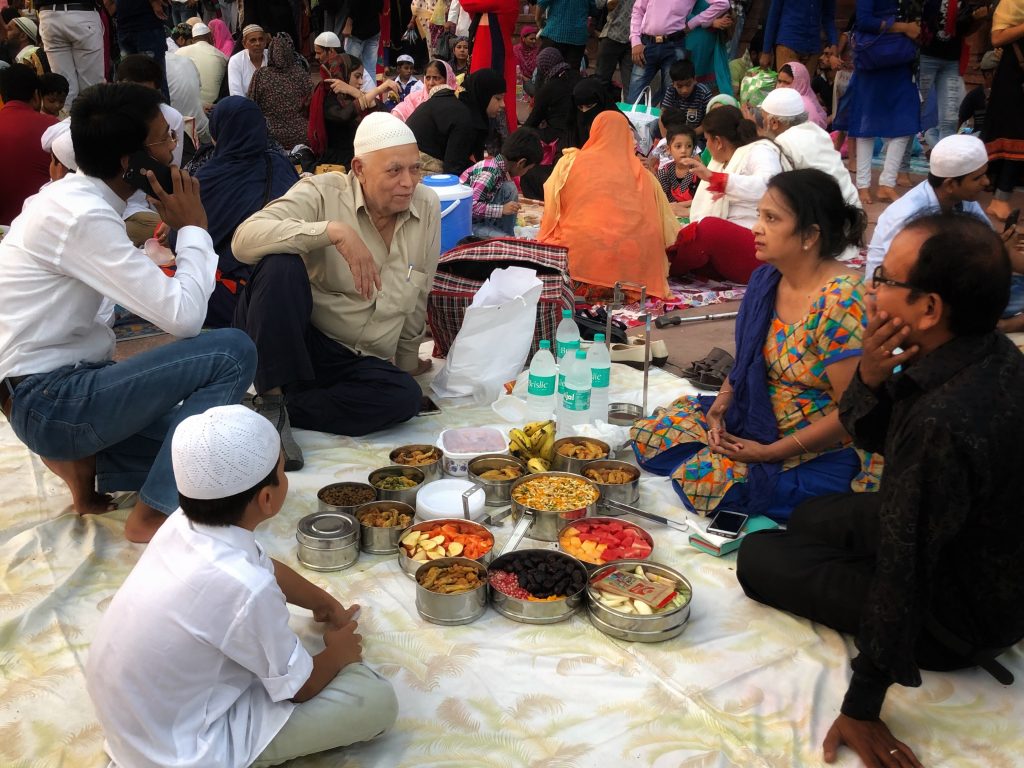
At exact 7:16 p.m, the time of Maghrib or sunset, the Jama Masjid lit up like a bride and the iftar sirens and adhan, the Islamic call to worship reverberated from the loudspeakers of the mosque. The chit chatter quietened as everyone took their first bite. I glanced around. No separate plates were being used. Families shared food from the same bowl. This was a perfect example of communion and fellowship. This is how community building and a feeling of brotherhood is created. Many of us were not from the community yet the smiles and warmth that we received from everyone made us a part of them. The month of Ramadan teaches generosity and charity. It makes one appreciate what they have and empathises with the less fortunate. It was heartening to see food being shared with strangers and distributed among the poor. Ramadan is a time for sharing, humility and love.
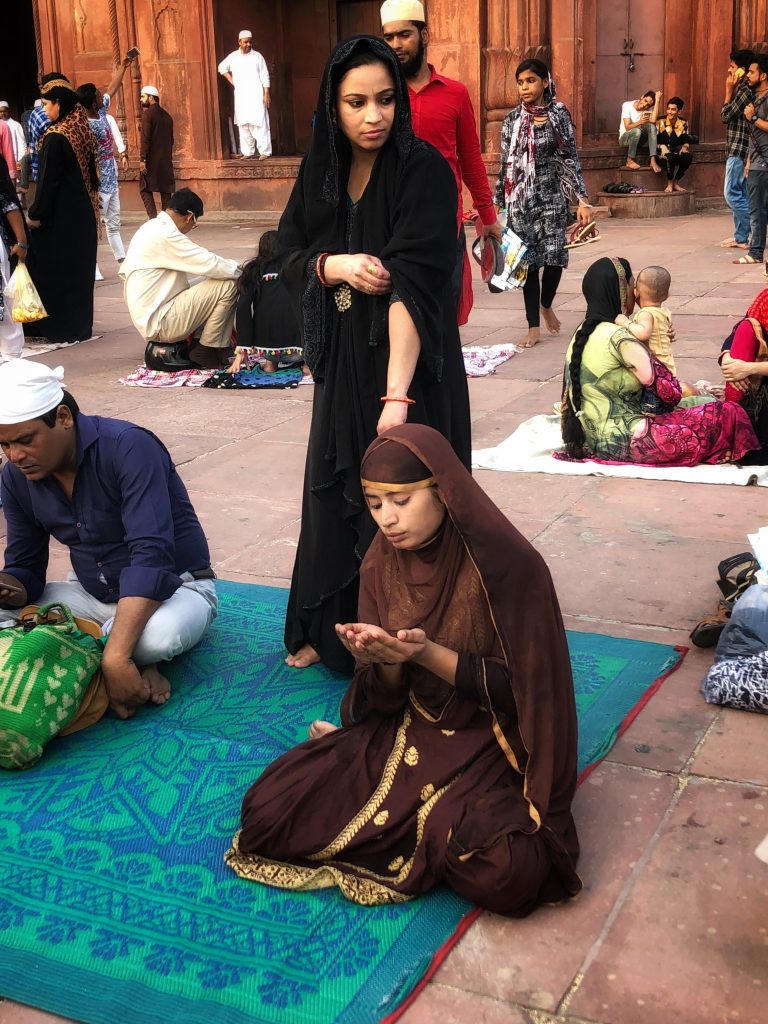
A prayer to Allah
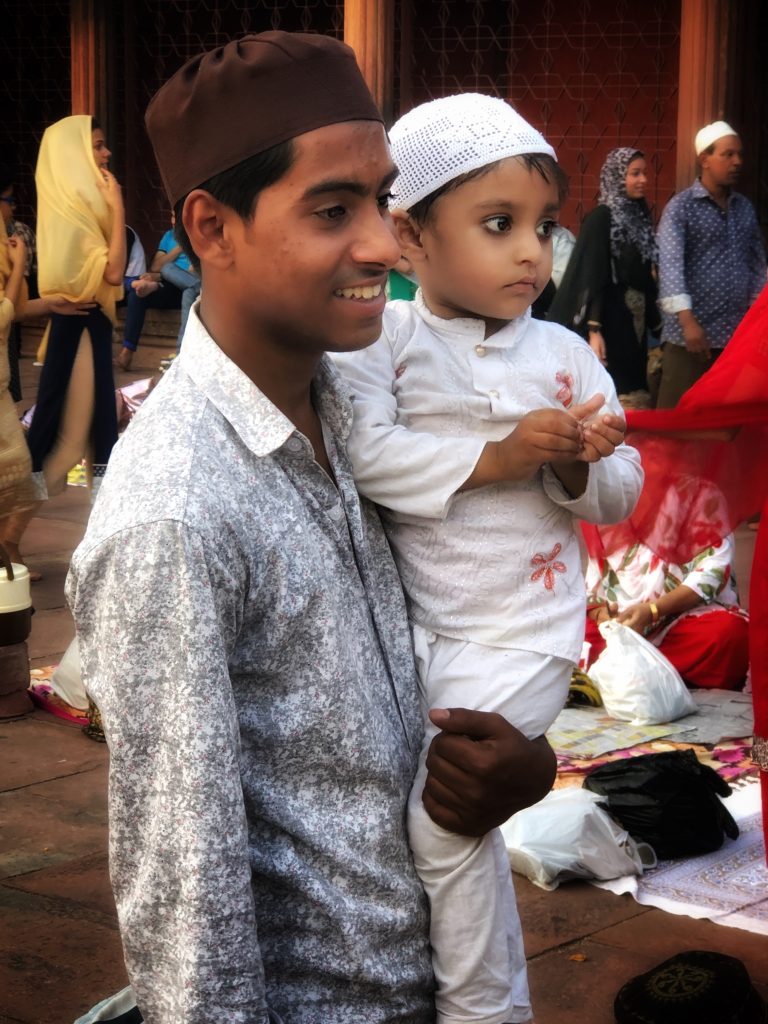
As I write the post, the headlines of the newspaper stare back at me. “Murdered Delhi Photographer Ankit Saxena’s family organises Iftar at home.” Four months ago, Ankit Saxena was stabbed to death by the family members of his Muslim girlfriend. It was an honour killing because the boy was not Muslim. Why don’t we understand that love does not know any religion? The act of killing is wrong, not the religion. This is the reason why Ankit’s family rose in spirit and organised an Iftar. The message was to spread communal harmony, peace and love. Last week, I sat in Hazrat Bal, Srinagar and yesterday shared food with strangers in Jama Masjid. Despite belonging to a different community, it felt like a homecoming to me. There were smiles, love and a feeling of oneness. Does any religion teach hatred against each other? Isn’t brotherhood and togetherness an integral part of religion? Or let me end this post by asking each one of you -What is religion all about?

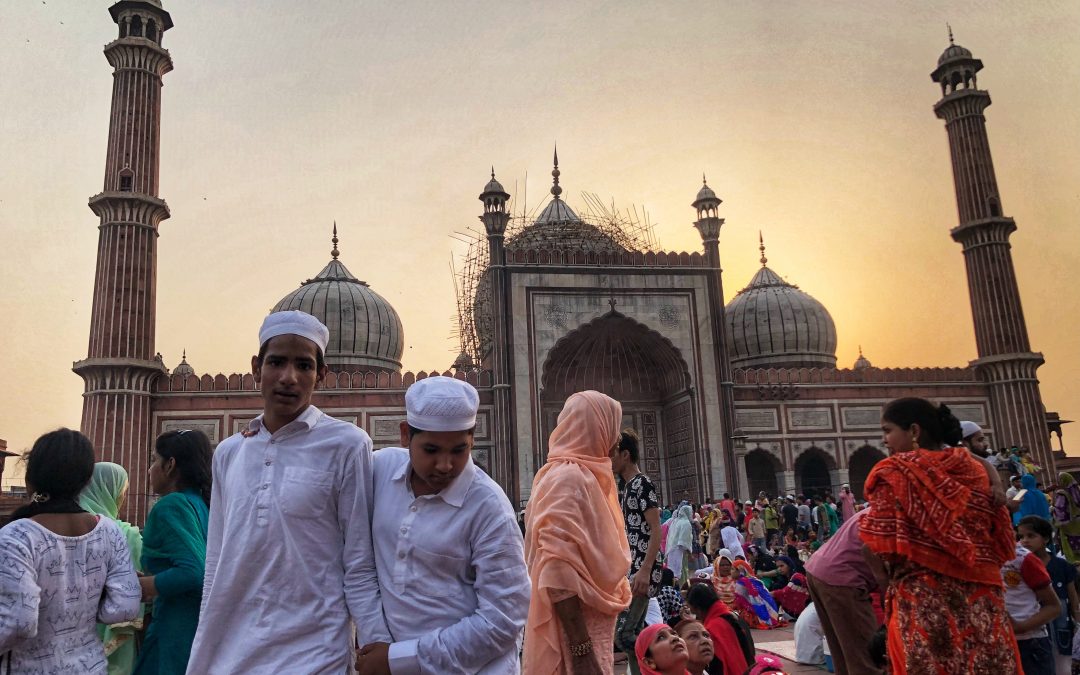

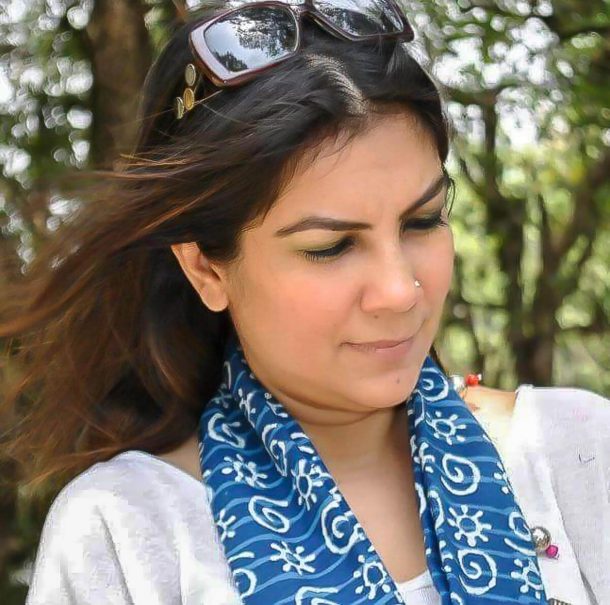
Even though I have not attend one Iftar party I love the street food sold during those times Mosque road in Bangalore is one such place. Good coverage of Iftar at Jama Masjid
Thank you, Umesh. There are some special food items made especially during Ramzan and that gives all of us another reason to try street food then.
Never get a chance to attend Iftaar party at any mosque before, but the picture tells the whole story that I should go for it this Ramadhan.